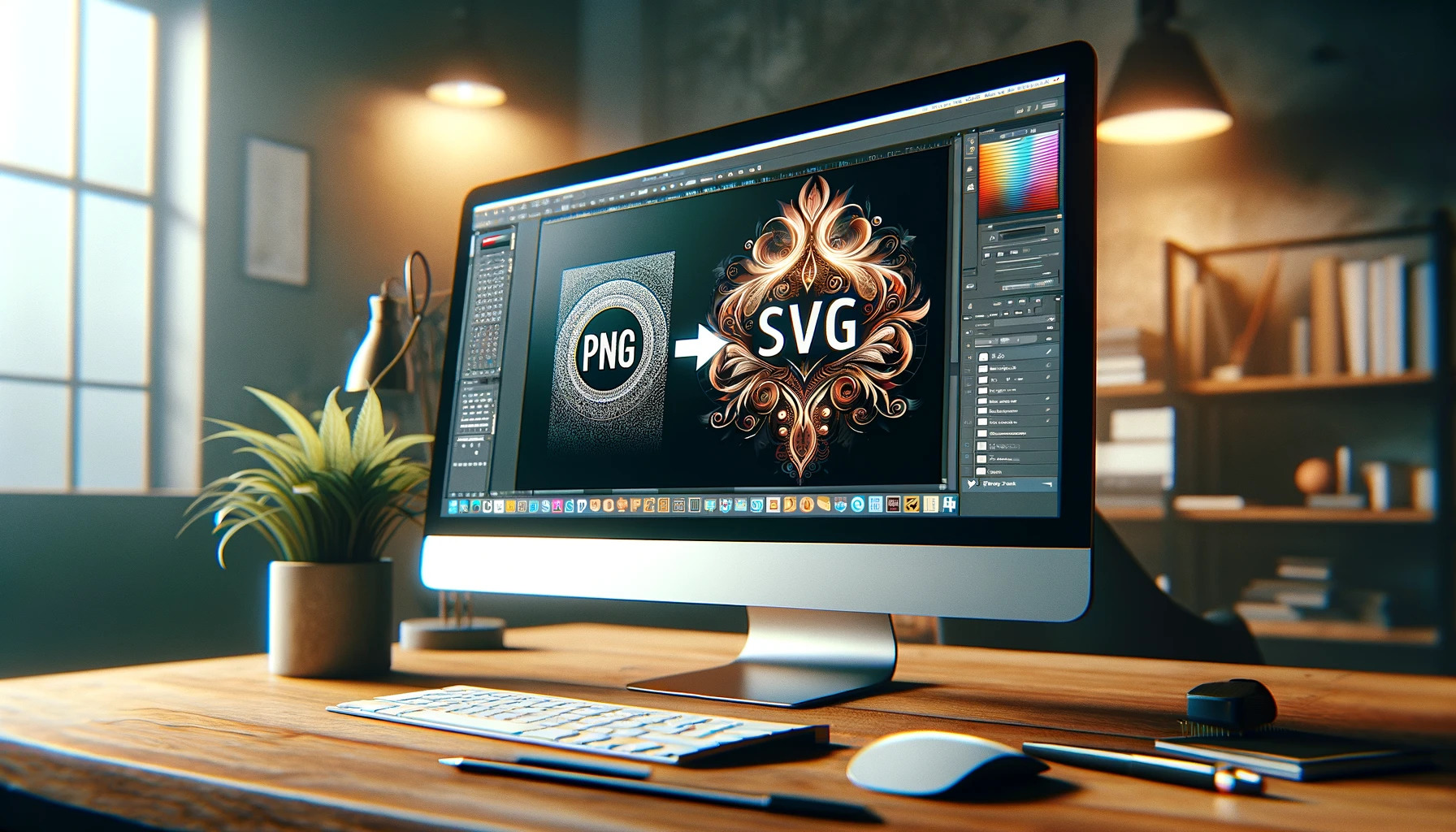How to Convert PNG to SVG: A Step-by-Step Guide
By Mark
Published March 13, 2024
 How to Convert PNG to SVG: A Step-by-Step Guide
How to Convert PNG to SVG: A Step-by-Step Guide
PNG images are widely recognized for their lossless compression, making them a popular choice for detailed graphics and web images. However, there comes a time when scalability and editing flexibility take precedence, necessitating the conversion of PNG to SVG. SVG, or Scalable Vector Graphics, offers the advantage of scaling images without losing quality, making it ideal for a variety of applications from web design to print materials. This comprehensive guide walks you through the steps to convert your PNG images into SVG format, ensuring that you can maintain image quality while gaining the benefits of vector graphics.
Why Convert?
Before diving into the "how," let's briefly touch on the "why." Converting a PNG to SVG can significantly enhance your graphic's usability. Vector graphics are not only scalable but also editable in many graphic design software. This conversion can be particularly beneficial for logos, icons, and illustrations that need to retain sharpness at various sizes.
Step 1: Choose Your Tool
The first step in the PNG conversion process is selecting the right tool. Several online tools for PNG conversion are available, offering an easy and accessible way to convert images without the need for specialized software. These tools often provide additional conversion options, such as the ability to convert PNG to ICO for icons, or convert PNG to PDF for documents, offering a versatile solution for various file conversion needs.
Step 2: Prepare Your PNG Image
- Ensure your PNG image is the highest quality available. This step is crucial because the quality of your source image affects the outcome of the SVG.
- If your image contains text, consider whether it's essential for the SVG version. Text can complicate the conversion process and might not be necessary for all applications.
Step 3: Upload Your PNG
- Navigate to your chosen online conversion tool. These platforms typically have a straightforward interface where you can drag and drop your PNG file or use a file selection dialog to upload your image.
- Wait for the upload process to complete. Large files might take a few moments longer.
Step 4: Convert Your PNG
- Once your PNG is uploaded, select the option to convert it to SVG. This step might vary slightly depending on the tool you're using, but it generally involves clicking a 'Convert' button or selecting SVG from a list of output formats.
- Adjust conversion settings if available. Some tools allow you to tweak settings like color palettes, simplification levels, or borders to get the best result for your needs.
Step 5: Download Your SVG
- After the conversion process completes, download the resulting SVG file. Make sure to save it in a location where you can easily find it for further use or editing.
- Inspect the SVG file. Open it in a graphic design software or an SVG viewer to check the quality and accuracy of the conversion. Make adjustments if necessary.
Step 6: Edit and Optimize Your SVG
- Use a vector graphic editor to fine-tune your SVG. This step is where the real advantage of SVG comes into play, as you can easily scale, edit, and adjust your image without degradation.
- Optimize the SVG for its intended use. Depending on where you plan to use your SVG, you might need to adjust its size, colors, or details to ensure it looks perfect in its final context.
Conclusion
Converting PNG images to SVG format opens up a world of possibilities for designers, developers, and content creators. By following this step-by-step guide, you can transform your static PNG images into versatile, scalable vector graphics ready for a wide range of applications. Remember, the key to a successful conversion lies in choosing the right online tools for PNG conversion and preparing your PNG files carefully. With a bit of practice, you'll find this process to be a valuable addition to your digital toolkit.